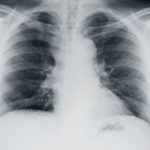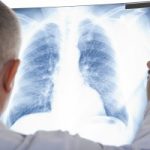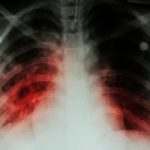Thousands of medical professionals across the U.S. have joined efforts this week to raise awareness on the important role pulmonary rehabilitation plays in improving the lives of patients with lung conditions – chronic obstructive pulmonary disease (COPD), chronic bronchitis, cystic fibrosis, scleroderma, to name a few – as part of the National Pulmonary Rehabilitation Week. Pulmonary rehabilitation is a form of treatment that uses education and exercise to improve the lung health of individuals suffering from pulmonary problems. This program is based on a premise that lifestyle changes can help reduce symptoms and improve the quality of life. It includes diet counseling, patient screening, stress management, and monitored exercise. Although pulmonary rehabilitation is not a cure for lung condition, it is an effective way to cope and live with it. To get to know some common lung conditions and recent research in this area, take a read through our compilation of pulmonary health news.
 COPD and chronic bronchitis patients seek relief from new device
COPD and chronic bronchitis patients seek relief from new device
Patients with COPD or chronic bronchitis can obtain relief from their conditions with a new device called Aerobika® made from Trudell Medical International. COPD and chronic bronchitis symptoms can worsen in the winter months, leaving patients breathless. Aerobika® is a device that can help open airways and loosen up mucus, making it easier to expel and improving the way patients breathe.
Advertisement
It is estimated that nearly 800,000 Canadians have COPD and another 2.4 million are living with the condition undiagnosed. Symptoms of COPD include coughing, coughing with mucus, shortness of breath, lung infections, difficulty walking long distances, and difficulty performing daily tasks because it is hard to breathe.
The Aerobika® device is a drug-free device that is easy to use and can improve the breathing abilities of COPD and chronic bronchitis patients. The device creates vibrations in the chest which thins out and loosens up mucus, making it easier to expel. Continue reading…
 In cystic fibrosis patients, lung infection can be caused by bacterial infection
In cystic fibrosis patients, lung infection can be caused by bacterial infection
In cystic fibrosis patients, lung infection can be caused by bacterial infection. The bacterial infection can affect anyone, though it’s virtually harmless in the general population. But now researchers are closer to understanding why it poses a higher risk in cystic fibrosis patients.
Known as Burkholderia cenocepacia, the bacterium is resistant to nearly all known antibiotics and can contribute to lung infection in cystic fibrosis patients. Cystic fibrosis (CF) is a condition that causes a buildup of mucus in lungs – as well as other parts of the body – making it difficult for a person to breathe. Lung infection is responsible for nearly 85 percent of deaths in cystic fibrosis.
Researchers from Ohio State University found that B. cenocepacia interferes with an important survival process in cells that are responsible to fight off infection. The process is stronger in cystic fibrosis patients, leading to more serious complications. Continue reading…
 High fiber may improve the lungs
High fiber may improve the lungs
A new study suggests that consuming a high-fiber diet may reduce the risk of lung disease. Study author Corrine Hanson said, “Lung disease is an important public health problem, so it’s important to identify modifiable risk factors for prevention. However, beyond smoking, very few preventative strategies have been identified. Increasing fiber intake may be a practical and effective way for people to have an impact on their risk of lung disease.”
The researchers looked at data from nearly 2,000 American adults aged 40 to 79. The researchers found that nearly 68 percent of participants who consumed the highest amounts of fiber – 18 grams or more a day – had normal lung function, compared to 50 percent of those with the lowest fiber content. Only 15 percent of those who consumed high levels of fiber had airway restrictions, compared to 30 percent of those who consumed the least.
Participants who consumed the most fiber also completed two breathing tests with higher success, compared to those who consumed the least. Continue reading…
 Scleroderma-related interstitial lung disease can be treated with new promising treatment
Scleroderma-related interstitial lung disease can be treated with new promising treatment
Scleroderma-related interstitial lung disease can be treated with new promising treatment. Interstitial lung disease is common in systemic sclerosis and is the leading cause of death. If discovered early on, though, prognosis is positive for patients.
Interstitial lung disease is a term to describe a large group of disorders that refers to the scarring of lung tissue and supporting of the air sacs. This scarring can contribute to lung stiffness, which affects a person’s ability to breathe limiting oxygen from entering the bloodstream.
Lung scarring is irreversible, but medications are available to help slow down the progression and assist in breathing. If severe a lung transplant may be advised. Continue reading…
 New imaging technique aids earlier diagnosis of fungal lung infection
New imaging technique aids earlier diagnosis of fungal lung infection
Advertisement
German and Swiss medical engineers collaborated with their counterparts at the University of Exeter to develop a new clinical imaging method. This new diagnostic technique would help doctors detect the spores of the fungus, Aspergillus fumigatus, sooner and more effectively, and help reduce the risk of death in patients with weakened immune systems. Currently, this infection causes an estimated 200,000 deaths globally, each year.
Aspergillus fumigatus spores are tiny spores that are present everywhere in the air and are inhaled by humans on a daily basis. People with healthy immune systems are not adversely affected by the spores, as the spores get destroyed before they can grow and infect the body. But in patients with a weakened immune system, the fungus faces little resistance.
Once the spores enter the body, the fungus settles into the lungs and spreads from there, causing invasive pulmonary aspergillosis. In immunocompromised patients, invasive pulmonary aspergillosis is one of the most common causes of death. The best way to prevent death is to detect the spores early on and subject them to targeted treatment, but until recently this was not possible as there were no fast and reliable method of diagnosis. Continue reading…
